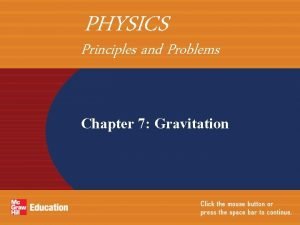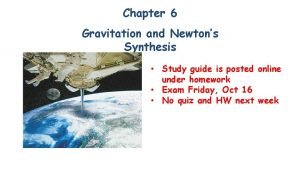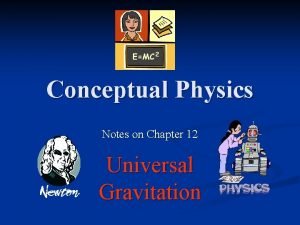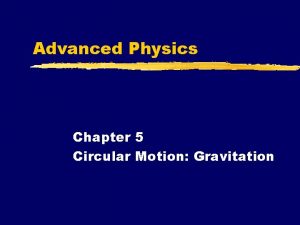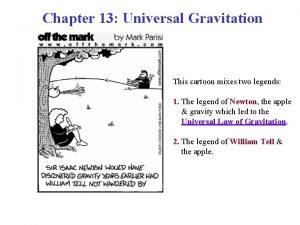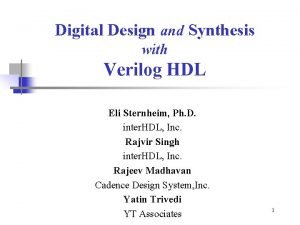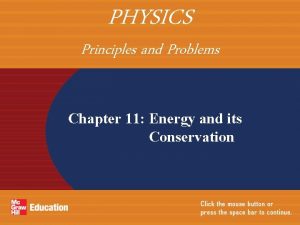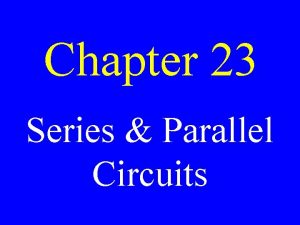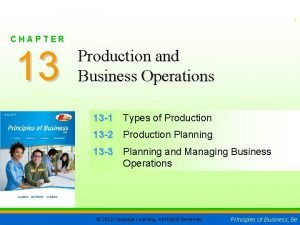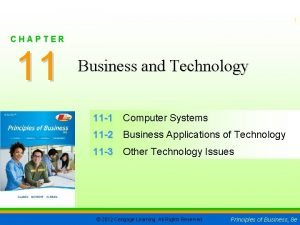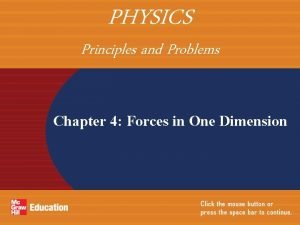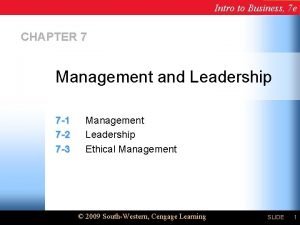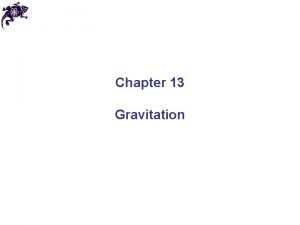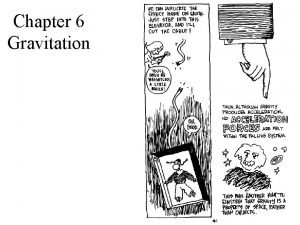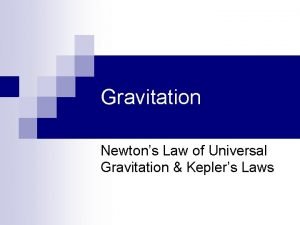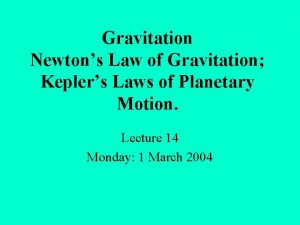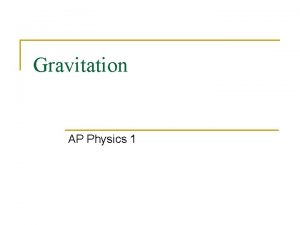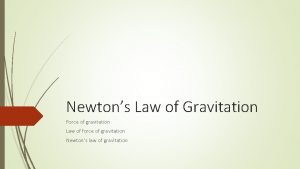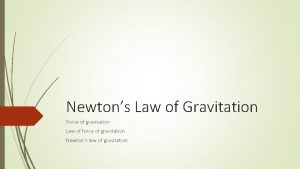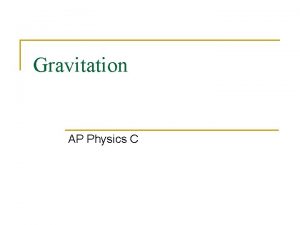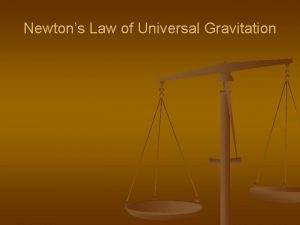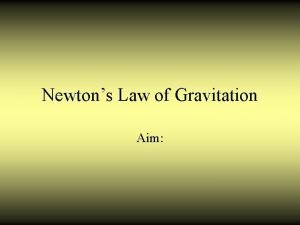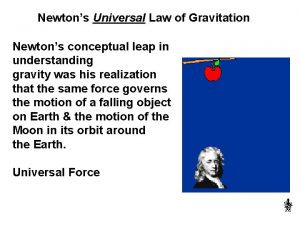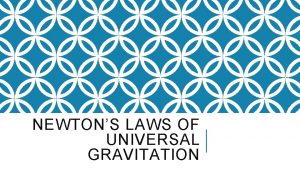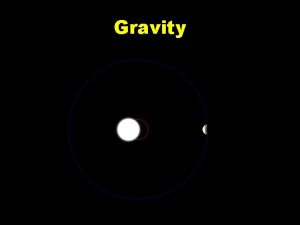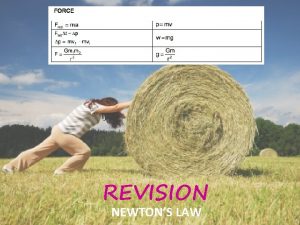Chapter 6 Gravitation and Newtons Synthesis Study guide

















- Slides: 17

Chapter 6 Gravitation and Newton’s Synthesis • Study guide is posted online under homework • Exam Friday, Oct 16 • No quiz and HW next week

Highway Curves: Banked and Unbanked When a car goes around a curve, there must be a net force toward the center of the circle of which the curve is an arc. If the road is flat, that force is supplied by friction.

Highway Curves: Banked and Unbanked If the frictional force is insufficient, the car will tend to move more nearly in a straight line, as the skid marks show.

Highway Curves: Banked and Unbanked As long as the tires do not slip, the friction is static. If the tires do start to slip, the friction is kinetic, which is bad in two ways: 1. The Kinetic frictional force is smaller than the static. 2. The static frictional force can point toward the center of the circle, but the kinetic frictional force opposes the direction of motion, making it very difficult to regain control of the car and continue around the curve.

Highway Curves: Banked and Unbanked Example 5 -14: Skidding on a curve. A 1000 -kg car rounds a curve on a flat road of radius 50 m at a speed of 15 m/s (54 km/h). Will the car follow the curve, or will it skid? Assume: (a) the pavement is dry and the coefficient of static friction is μs = 0. 60; (b) the pavement is icy and μs = 0. 25.

Highway Curves: Banked and Unbanked Banking the curve can help keep cars from skidding. In fact, for every banked curve, there is one speed at which the entire centripetal force is supplied by the horizontal component of the normal force, and no friction is required. This occurs when:

Velocity-Dependent Forces: Drag and Terminal Velocity When an object moves through a fluid, it experiences a drag force that depends on the velocity V of the object. FD= -bv b is a constant that depends on the viscosity, size and shape of the object For small velocities, the force is approximately proportional to the velocity; for higher speeds, the force is approximately proportional to the square of the velocity.

6 -1 Newton’s Law of Universal Gravitation If the force of gravity is being exerted on objects on Earth, what is the origin of that force? Newton’s realization was that the force must come from the Earth. He further realized that this force must be what keeps the Moon in its orbit.

Newton’s Law of Universal Gravitation The gravitational force on you is : the Earth exerts a downward force on you, and you exert an upward force on the Earth. When there is such a disparity in masses, the reaction force is undetectable, but for bodies more equal in mass it can be significant.

Newton’s Law of Universal Gravitation Therefore, the gravitational force must be proportional to both masses. By observing planetary orbits, Newton also concluded that the gravitational force must decrease as the inverse of the square of the distance between the masses. In its final form, the law of universal gravitation reads: Where G is the universal constant r is the distance between the center of the objects

Question What is the earth’s period about the sun? A)24 hours B) 28 days C) 365 days

Newton’s Law of Universal Gravitation Example 6 -1: Can you attract another person gravitationally? A 50 -kg person and a 70 -kg person are sitting on a bench close to each other. Estimate the magnitude of the gravitational force each exerts on the other.

6. 2 Vector Form of Newton’s Universal Gravitation In vector form, This figure gives the directions of the displacement and force vectors.

Vector Form of Newton’s Universal Gravitation If there are many particles, the total force is the vector sum of the individual forces: F 1 i is the force on particle 1 exerted by particle i, n is the number of particles.

Problem 8

6 -3 Gravity Near the Earth’s Surface; Geophysical Applications Now we can relate the gravitational constant to the local acceleration of gravity. We know that, on the surface of the Earth: Solving for g gives: Now, knowing g and the radius of the Earth, the mass of the Earth can be calculated:

6 -3 Gravity Near the Earth’s Surface; Geophysical Applications The acceleration due to gravity varies over the Earth’s surface due to altitude, local geology, and the shape of the Earth, which is not quite spherical.
 Chapter 7 physics study guide answers
Chapter 7 physics study guide answers Gravitation and newton's synthesis
Gravitation and newton's synthesis Dna protein synthesis study guide answers
Dna protein synthesis study guide answers Conceptual physics chapter 13 universal gravitation
Conceptual physics chapter 13 universal gravitation Chapter 5 circular motion gravitation
Chapter 5 circular motion gravitation Cartoon law of universal gravitation
Cartoon law of universal gravitation Verilog
Verilog Verilog hdl
Verilog hdl Chapter 11 study guide physics
Chapter 11 study guide physics Chapter 12 geometry test
Chapter 12 geometry test Chapter 8 study guide human resources culture and diversity
Chapter 8 study guide human resources culture and diversity Chapter 8 study guide human resources culture and diversity
Chapter 8 study guide human resources culture and diversity Chapter 23 series and parallel circuits
Chapter 23 series and parallel circuits Chapter 13 study guide production and business operations
Chapter 13 study guide production and business operations Chapter 11 business and technology
Chapter 11 business and technology Physics chapter 4 study guide
Physics chapter 4 study guide Chapter 7 study guide management and leadership
Chapter 7 study guide management and leadership Of mice and men chapter 1 questions
Of mice and men chapter 1 questions
